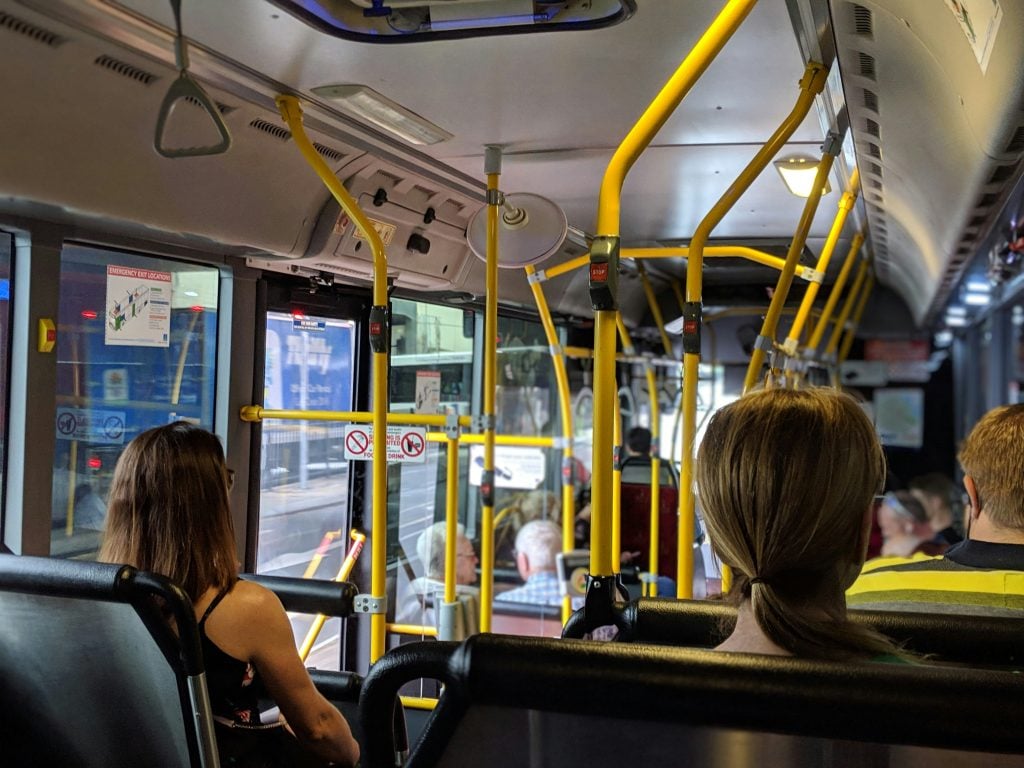We spend a lot of time singing the praises of outdoor media. Our belief that OOH advertising is one of the most effective channels doesn’t come out of nowhere though. It’s data driven — backed by in-depth research and statistics.
In an age dominated by all things digital, many of us automatically assume that online channels see the most meaningful engagement. However, the following advertising facts might make you rethink that.
Considering the best way to formulate your next marketing campaign? We’re counting down some of the most interesting facts about advertising.
Table of contents
- 10. Outdoor ads are better for your budget
- 9. Consumers are more likely to trust outdoor ads than online ads
- 8. OOH ads appeal to younger generations
- 7. Nearly half of consumers look up information online after seeing an OOH ad
- 6. Billboards inspire word of mouth interaction
- 5. The DOOH market size is expected to grow to $33.37 billion by 2026
- 4. Public transit commuters notice outdoor ads, too
- 3. Airport ads boost your brand’s credibility
- 2. Social media usage is volatile, app deletion on the rise
- 1. 912 million internet users worldwide use ad blockers
- FAQs
10. Outdoor ads are better for your budget

There’s a common misconception that billboards are cost-prohibitive for a lot of brands. In actuality, bulletins and posters have a lower CPM (cost per thousand impressions) than a handful of other advertising channels including podcasts, magazines, TV, and mobile video.
No matter if you have a limited budget or you’re working with a massive amount of funds, it’s wise to think cost-effectively. You can reach more people for less money by choosing OOH. Not to mention that viewer engagement can be more meaningful.
9. Consumers are more likely to trust outdoor ads than online ads
One study surveyed 1,200 consumers about the types of advertising channels they trust most when making a purchase decision. The results? 69% of people said that they trust outdoor ads. When we compare that to the 43% of people who said they trust social media ads or the 25% of people who said they trust online pop-ups, it’s clear that outdoor ads are perceived as more trustworthy.
With phishing emails, spam messages, and clickbait content abound, it’s not surprising that people are skeptical of many online ads. OOH media on the other hand has a certain credibility to it. It doesn’t scream “click me!!!” and it’s apparent that people appreciate that.
8. OOH ads appeal to younger generations

Gen Z (born after 1997) has had more access to technology than any generation before it. It’s fair to assume that they’d respond better to online ads than they would to traditional advertising formats like billboards or transit ads. But research shows that a majority of Gen Zers are actually pro billboard.
This goes back to our earlier point that billboards are less obtrusive than online ads are. They don’t disrupt our experiences as we go about our day. Whereas an ad in the middle of a YouTube video can be really obnoxious — especially unskippable ones.
Likewise, outdoor ads tend to be more contextually relevant than online ads because they typically advertise a product, service, or business that appeals to people in that area.
7. Nearly half of consumers look up information online after seeing an OOH ad
OOH ads are far from a see it and forget it form of advertising. Research has shown significant rates of follow-up after consumers see outdoor ads. The fact that 46% of people search for more information about a brand, product, or service after seeing an outdoor ad means that your online presence must be strong.
Are you prioritizing search engine optimization? Is your Google Business profile up to date? Is your website mobile friendly? Ensuring that your brand has an effective digital presence can streamline the conversion pipeline.
6. Billboards inspire word of mouth interaction

Tired of small talk about the weather? How about billboards instead? One study found that 56% of respondents mentioned a billboard they found funny in conversation. That extends your reach even further than the just people who lay eyes on your ad.
Even more, word-of-mouth marketing is a powerful tool. People have a tendency to trust people over ads alone. So when someone mentions your brand in conversation, it can enhance the listener’s perceptions about your brand.
5. The DOOH market size is expected to grow to $33.37 billion by 2026
Do you ever encounter a number so massive that you’re not sure what to make of it? We’ll contextualize this for you. The digital out-of-home (DOOH) market size is projected to grow to $33.37 billion by 2026. That’s billion with a B. In 2019, the DOOH market size sat at a still impressive $16.75 billion.
The numbers speak for themselves really. Brands believe in the power of DOOH, which explains why the amount of outdoor digital placements rapidly increases every day. Since DOOH encompasses an array of different types of signage, you can find options just about anywhere — from malls to hospitals to gas stations and even elevators.
4. Public transit commuters notice outdoor ads, too

Though we often refer to drivers and passengers in their own vehicles, it’s important not to discount people who use public transportation when accounting for outdoor media impressions. Contrary to what it may seem, not everyone is engrossed in their phones when they’re on the bus, subway, or other public transit mode.
66% of bus and taxi riders report seeing a billboard the month before the study. When you consider the frequency of trips any given bus takes each day and the number of people on board, that’s a lot of eyeballs on your ad.
3. Airport ads boost your brand’s credibility
Airport advertising is one of the hottest forms of place-based advertising. Why? High dwell times. Affluent and diverse audiences. Numerous placement options. The list goes on.
83% of people who fly frequently notice airport advertising and 3-out-of-4 associate airport advertising with high-quality brands. It could have something to do with the fact that some airports house everything from grab-and-go snack stands to designer boutiques.
The effectiveness of airport ads illustrates the fact that ad contextuality can influence perceptions and purchasing decisions.
2. Social media usage is volatile, app deletion on the rise

Yes, major social media platforms boast millions of users, but what is there to say about the level of satisfaction among these users? Research has found that many people are turning away from certain social media platforms with Instagram being the #1 app that users want to delete.
It can be hard to pinpoint what exactly is the final straw for some people, but disinformation, bots, privacy issues, and a number of other issues all play into this increase in negative attitudes towards social media. All of this is to say that social media advertising might not elicit the responses you want it to.
1. 912 million internet users worldwide use ad blockers
Returning to advertising fact #9, pop-up advertisements and many online ads in general are a nuisance to many people. That explains why approximately 912 million internet users across the world use ad blockers. It’s become a major concern among some online advertising professionals. Advertisers spend hundreds — sometimes thousands of precious ad dollars — for restricted visibility. All we have to say is: you can’t ad block a billboard.
Don’t sit idle waiting for your ad campaigns to achieve success. Take matters into your own hands by taking advantage of the tried and true power of out-of-home advertising.
FAQs
Why do consumers trust outdoor ads more than online ads?
Consumers view outdoor ads as more credible and less intrusive than digital ads. Studies show that 69% of people trust outdoor advertising, compared to only 43% who trust social media ads. Billboards, transit ads, and airport advertising don’t interrupt user experiences or rely on personal data — helping build trust and authenticity.
How effective is out-of-home (OOH) advertising compared to digital ads?
OOH advertising is highly effective at driving action and awareness. Nearly 46% of consumers look up a brand online after seeing an outdoor ad, and 56% mention memorable billboards in conversation. Unlike online ads that can be skipped or blocked, OOH campaigns offer constant visibility and higher engagement.
What is digital out-of-home (DOOH) advertising, and why is it growing?
Digital out-of-home (DOOH) advertising includes digital billboards, screens, and signage in public spaces such as malls, airports, and transit hubs. The global DOOH market is projected to reach $33.37 billion by 2026, fueled by better targeting, dynamic content, and its ability to reach consumers in the real world.
Is social media advertising still effective?
While social media ads can still be valuable, user trust and engagement are declining. Millions of users now use ad blockers or delete apps due to privacy concerns and ad fatigue. Many brands are shifting budgets toward OOH and DOOH, which offer more lasting impressions and credibility.
